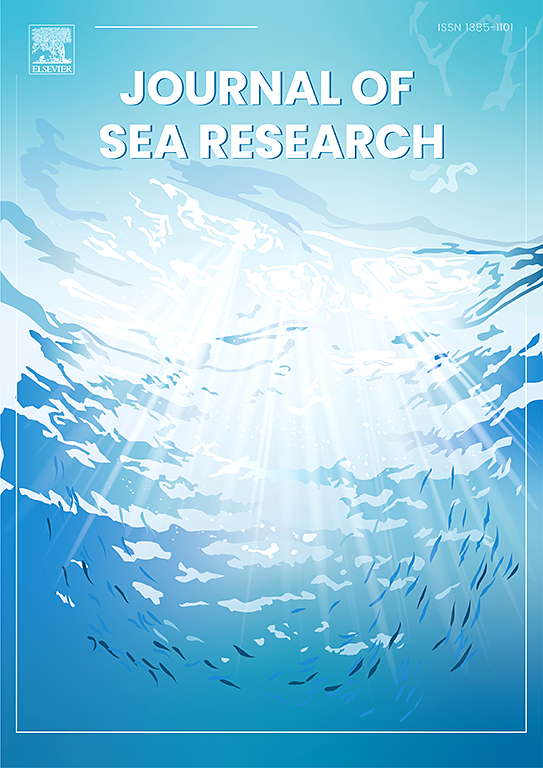2013 - 2023年浙江近海寒潮成因数值模拟
IF 2.9
4区 地球科学
Q2 MARINE & FRESHWATER BIOLOGY
引用次数: 0
摘要
寒潮是冬季一种常见的气象现象,它往往会引发巨浪,进一步威胁近海安全。浙江近海是典型的寒潮多发地区。因此,了解浙江近海寒潮的特征和机制具有重要意义。基于区域海洋模拟系统,对2013 - 2023年冬季浙江近海共35次寒潮事件进行了模拟,并对其相关浪涌进行了分析。这些寒潮事件引起的区域最大浪涌在0.23 ~ 1.02 m之间。从空间格局上看,35次寒潮事件诱发的浪涌可分为3类,分别以杭州湾、台州-温州近海和几乎整个浙江沿海地区的浪涌值较高为特征。此外,开尔文波和埃克曼输运都有助于冷波引起的浪涌。通过与对照实验的比较,发现开尔文波是主导因素,对浪涌的贡献大于75%,而埃克曼输运的贡献小于25%。本文章由计算机程序翻译,如有差异,请以英文原文为准。
Numerical simulation of cold wave-induced surges in Zhejiang offshore from 2013 to 2023
Cold waves are a common meteorological phenomenon in the winter seasons, which often induce water surges that further threaten offshore safety. Zhejiang offshore is a typical region that frequently suffers from cold waves. Hence, understanding the characteristics and mechanisms of cold wave-induced surges in Zhejiang offshore is of great importance. Based on the Regional Ocean Modeling System, we simulate a total of 35 cold wave events and analyze their associated surges in Zhejiang offshore in the winter seasons from 2013 to 2023. The regional maximum surges induced by these cold wave events range between 0.23 and 1.02 m. According to the spatial pattern, the surges induced by the 35 cold wave events can be classified into three categories, which are characterized by high values in Hangzhou Bay, Taizhou-Wenzhou offshore, and nearly the entire coastal region of Zhejiang, respectively. Moreover, both the Kelvin wave and Ekman transport contribute to the surges induced by cold waves. Through a comparison with control experiments, it is found that the Kelvin wave is the dominant factor, which contributes more than 75 % to the surges, whereas the contribution of Ekman transport is less than 25 %.
求助全文
通过发布文献求助,成功后即可免费获取论文全文。
去求助
来源期刊

Journal of Sea Research
地学-海洋学
CiteScore
3.20
自引率
5.00%
发文量
86
审稿时长
6-12 weeks
期刊介绍:
The Journal of Sea Research is an international and multidisciplinary periodical on marine research, with an emphasis on the functioning of marine ecosystems in coastal and shelf seas, including intertidal, estuarine and brackish environments. As several subdisciplines add to this aim, manuscripts are welcome from the fields of marine biology, marine chemistry, marine sedimentology and physical oceanography, provided they add to the understanding of ecosystem processes.
 求助内容:
求助内容: 应助结果提醒方式:
应助结果提醒方式:


